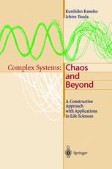Search
Search Results
-
Dislocations in the Repetitive Unit Patterns of Biological Systems
Periodicity, one of the most simple and frequent components of the process of pattern formation, observed in nonliving matter such as crystals or...
-
An Improved Algorithm for Generalized Comparison of Minisatellites
One of the most important objects in genetic map** and forensic studies are minisatellites. They consist of a heterogeneous tandem array of short...
-
Protein Structure Comparison: Algorithms and Applications
A protein is a complex molecule for which a simple linear structure, given by the sequence of its aminoacids, determines a unique, often very...
-
Growth and function of fungal mycelia in heterogeneous environments
As decomposer organisms, pathogens, plant symbionts and nutrient cyclers, fungi are of fundamental importance in the terrestrial environment....
-
Limiting relationships between selection and recombination
It is difficult to directly observe processes like natural selection at the genetic level, but relatively easy to estimate genetic frequencies in...
-
Archetypal Dynamics: An Approach to the Study of Emergence
This paper introduces the main concepts and constructs of archetypal dynamics, a formal approach to the study of emergence based upon the analysis of...
-
A survey of unequal crossover systems and their mathematical properties
We present a model of gene duplication by means of unequal crossover (UCO) where the probability of any given pairing between homologous sequences...
-
A Genetic Algorithm for the Weight Setting Problem in OSPF Routing
With the growth of the Internet, Internet Service Providers (ISPs) try to meet the increasing traffic demand with new technology and improved...
-
The adaptiveness of defence strategies against cuckoo parasitism
Host bird species of the Eurasian Cuckoo, Cuculus canorus , often display egg-discrimination behaviour but chick-rejection behaviour has never been...
-
Measuring the Searched Space to Guide Efficiency: The Principle and Evidence on Constraint Satisfaction
In this paper we present a new tool to measure the efficiency of evolutionary algorithms by storing the whole searched space of a run, a process...
-
Metabolic Hypercycles, Universality and Fractals in Biological Evolution
Self-organised critical system might be produced by an auto-regulatory feedback loop between opposite autocatalitic activities of catabolic and...
-
Basic Models
Before we can discuss modeling the evolution of DNA sequences, the reader needs a basic knowledge of the object being modeled. Biologists should skip...
-
Neutral Complications
In some cases, such as the human population, it is clear that the population size has not stayed constant in time. This motivates the consideration...
-
Methods for Macromolecular Modeling (M3): Assessment of Progress and Future Perspectives
The workshop on Methods for Macromolecular Modeling (M3), held at New York University on 12–14 October 2000, provided the 187 participants from...
-
Two-category model of task allocation with application to ant societies
In many network models of interacting units such as cells or insects, the coupling coefficients between units are independent of the state of the...
-
Beyond Spots and Stripes: Generation of More Complex Patterns by Modifications and Additions of the Basic Reaction
The question of how a complex organism can develop from a Single fertilized egg has fascinated biologist for more than two centuries. In earlier...
-
Statistical Interaction with Quantitative Geneticists to Enhance Impact from Plant Breeding Programs
Plant breeding programs operate to achieve genetic improvement in a target population of environments. This process relies heavily on successfully...
-
Mathematical Challenges from Molecular Evolution
The first documented revolution in biology took place last century when Charles Darwin’s centennial book on the origin of species was published 1859...
-
Spatiotemporal Pattern Formation in Early Development: A Review of Primitive Streak Formation and Somitogenesis
The basic body plan of a number of vertebrates results from two processes that occur early in the development of the blastoderm: large scale...
-
CMLs: Constructive Approach to Spatiotemporal Chaos
In physics, we are used to adopting a descriptive approach of nature. Often, one might assume that the macroscopic level of nature can be understood...
